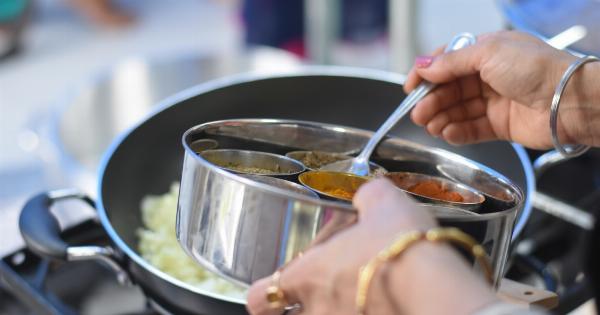Rice milk is a popular alternative to dairy milk, especially for those with lactose intolerance or allergies to cow’s milk.
Made from rice grains, rice milk offers a light and refreshing taste while being completely free from common allergens such as nuts, soy, and gluten. In this article, we will explore the benefits of rice milk, its nutritional profile, and its versatility in various recipes.
The Benefits of Rice Milk
1. Lactose-Free: Rice milk is an excellent choice for individuals with lactose intolerance, as it contains no lactose, the natural sugar found in milk and dairy products. This makes it easier to digest and suitable for those with sensitive stomachs.
2. Allergen-Free: Unlike dairy milk, rice milk is free from common allergens like nuts, soy, and gluten. This makes it a safe option for those with allergies or intolerances to these ingredients.
3. Low in Fat: Rice milk is naturally low in fat, making it a suitable choice for individuals who are watching their fat intake.
However, it’s important to note that some commercial brands may add oils to enhance the texture and flavor, so always check the label if you’re looking for a low-fat option.
4. Cholesterol-Free: Rice milk is cholesterol-free, making it heart-healthy and a good alternative for individuals with high cholesterol levels.
5. Easy to Digest: Rice milk is gentle on the digestive system, making it suitable for those with sensitive stomachs or digestive issues. It is also a common choice for infants with milk protein allergies.
Nutritional Profile of Rice Milk
Rice milk is naturally low in calories and fat, which makes it a great option for individuals looking to maintain or lose weight. However, it is also low in protein compared to dairy milk. Here is a breakdown of the nutritional profile of rice milk:.
Calories: One cup of unsweetened rice milk contains approximately 120-130 calories, making it a lighter option compared to full-fat dairy milk.
Protein: Rice milk contains minimal protein compared to dairy milk, with only about 1 gram per cup. It is essential to ensure that you consume other protein-rich foods to meet your daily requirements.
Carbohydrates: Rice milk is relatively high in carbohydrates due to the natural sugars present in rice. However, unsweetened varieties have lower carbohydrate content compared to those with added sweeteners.
Fat: Rice milk is naturally low in fat, with most varieties containing 2-3 grams of fat per cup.
However, some brands may add oils to improve the texture or increase the fat content, so checking the label is crucial if you have specific dietary requirements.
Vitamins and Minerals: Most commercially available rice milk is fortified with essential vitamins and minerals, including calcium, vitamin D, vitamin A, and vitamin B12.
These fortifications help make rice milk a nutritious alternative to dairy milk.
Using Rice Milk in Recipes
Rice milk is incredibly versatile and can be used in various recipes as a substitute for dairy milk. Here are a few ideas:.
1. Smoothies and Shakes
Rice milk adds a light and refreshing taste to smoothies and shakes. Its mild flavor pairs well with fruits such as berries, bananas, or mangoes.
Combine rice milk with your favorite fruits, add a scoop of protein powder if desired, and blend until smooth.
2. Baked Goods
Rice milk can be used as a substitute for dairy milk in cakes, muffins, cookies, and other baked goods. It provides moisture and helps create a tender texture.
Remember to adjust the recipe slightly, as rice milk has a thinner consistency compared to dairy milk.
3. Breakfast Cereal
Pour rice milk over your favorite breakfast cereals, such as oats, granola, or cornflakes. It adds a delicate flavor without overpowering the taste of the cereal.
4. Coffee or Tea
Rice milk can be a suitable dairy-free option for coffee or tea. Its mild taste doesn’t affect the flavors of your favorite hot beverages, making it an excellent alternative for those avoiding dairy.
5. Sauces and Soups
Use rice milk as a substitute for dairy milk or cream in creamy sauces or soups. It helps create a smooth and velvety texture without adding a strong flavor.
6. Rice Pudding
Rice milk can be used to make delicious and creamy rice pudding. Combine rice, rice milk, sweetener of your choice, and any desired flavorings such as vanilla or cinnamon.
Cook until the rice is tender and the mixture has thickened to your desired consistency.
7. Dairy-Free Ice Cream
Rice milk can be a base for dairy-free ice cream. Combine rice milk with your favorite flavors, such as cocoa powder, vanilla extract, or fruit purees.
Freeze the mixture and churn it in an ice cream maker according to the manufacturer’s instructions for a creamy and refreshing treat.
Conclusion
Rice milk offers a light and allergen-free alternative to dairy milk. It is suitable for individuals with lactose intolerance, allergies, or those looking for a low-fat and cholesterol-free option.
Rice milk’s versatility allows for its use in various recipes, from smoothies and baked goods to sauces and soups. When choosing rice milk, opt for unsweetened varieties with essential vitamin and mineral fortifications. Enjoy the mild and refreshing taste of rice milk while benefitting from its numerous health advantages!.






























